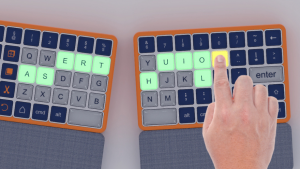
By printing solids and liquids at the same time, researchers at MIT’s Computer Science and Artificial Intelligence Laboratory (CSAIL) have 3D-printed a robot that can walk right out of the printer.
CSAIL Director Daniela Rus co-wrote the research paper alongside MIT postdoc Robert MacCurdy, Ph.D. candidate Robert Katzschmann, and Harvard University undergraduate Youbin Kim.
The science is significant because it solves a problem that has held back the development of robotics: making them is quite difficult.
The team dubbed the advancement “printable hydraulics” and according to Rus, it is “a step towards the rapid fabrication of functional machines.”
To demonstrate the process, the team 3D-printed a six-legged robot that can crawl via 12 hydraulic pumps embedded within its body. “All you have to do is stick in a battery and motor,” says Rus.
They also printed robotic parts that can be used on existing platforms, such as a soft rubber hand for the Baxter research robot.
To print multiple materials at the same time, the researchers used an inkjet printer, which deposits individual droplets of material. Printing layer by layer, the printer deposits different materials in different parts, and then uses high-intensity UV light to solidify the non-liquid materials.
“Inkjet printing lets us have eight different print-heads deposit different materials adjacent to one another, all at the same time,” MacCurdy explains. “It gives us very fine control of material placement, which is what allows us to print complex, pre-filled fluidic channels.”
Looking ahead, the team envision a number of uses for the system including disaster relief in dangerous areas. “Building robots doesn’t have to be as time-consuming and labor-intensive as it’s been in the past,” Rus says. “3-D printing offers a way forward, allowing us to automatically produce complex, functional, hydraulically-powered robots that can be put to immediate use.”





